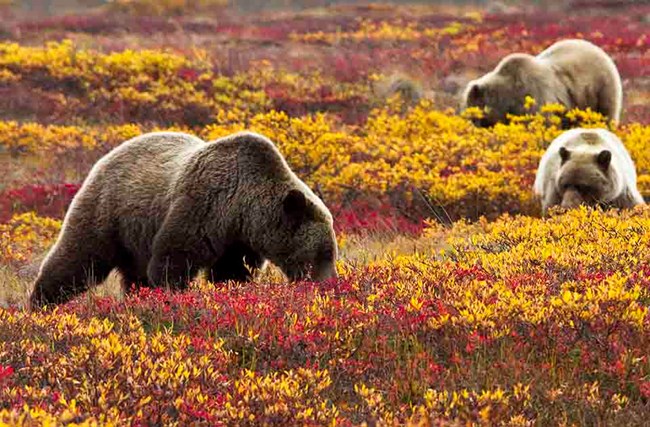Last updated: November 3, 2022
Article
Assessing Stressors in Brown Bears

NPS/Jacob Frank
Using gene transcription to assess ecological and anthropological stressors in brown bears
Abstract
Increasingly, population- and ecosystem-level health assessments are performed using sophisticated molecular tools. Advances in molecular technology enable the identification of synergistic effects of multiple stressors on the individual physiology of different species. Brown bears (Ursus arctos) are an apex predator; thus, they are ideal candidates for detecting potentially ecosystem-level systemic perturbations using molecular-based tools. We used gene transcription to analyze 130 brown bear samples from three National Parks and Preserves in Alaska. Although the populations we studied are apparently stable in abundance and exist within protected and intact environments, differences in transcript profiles were noted. The most prevalent differences were among locations. The transcript patterns among groups reflect the influence of environmental factors, such as nutritional status, disease, and xenobiotic exposure. However, these profiles also likely represent baselines for each unique environment by which future measures can be made to identify early indication of population-level changes due to, for example, increasing Arctic temperatures. Some of those environmental changes are predicted to be potentially positive for brown bears, but other effects such as the manifestation of disease or indirect effects of oceanic acidification may produce negative impacts.
Bowen, L., A. K. Miles, S. Waters, D. Gustine, K. Joly, and G. Hilderbrand. 2017. Using gene transcription to assess ecological and anthropological stressors in brown bears. EcoHealth 11 pp.
